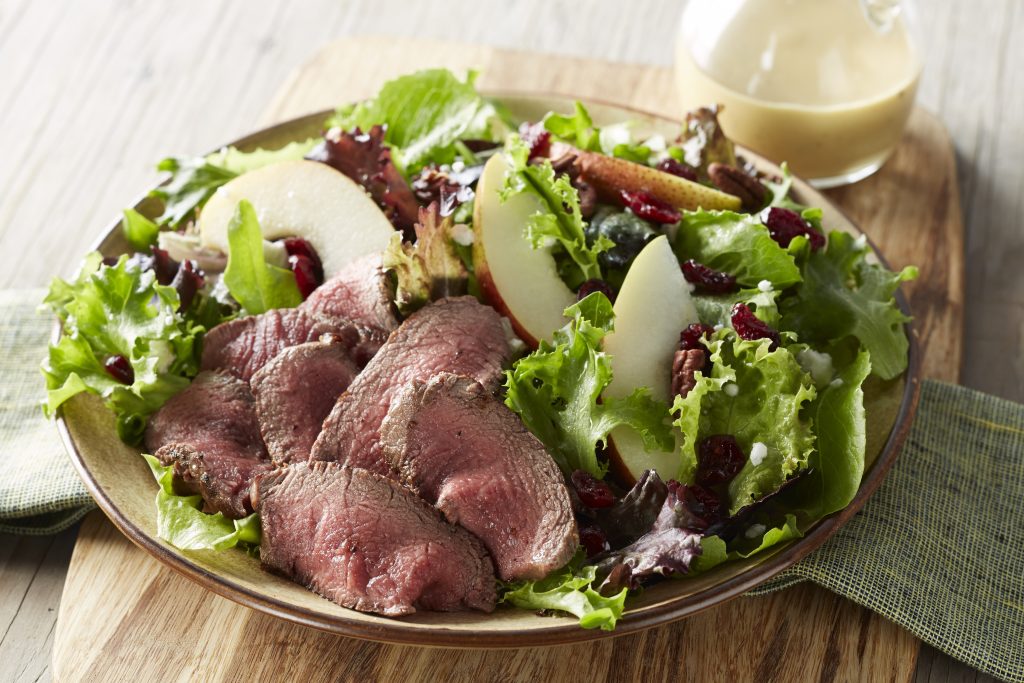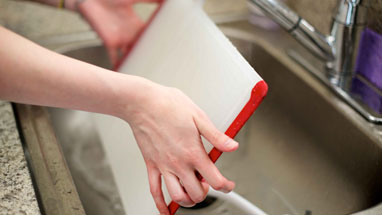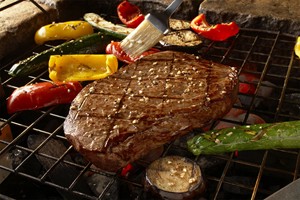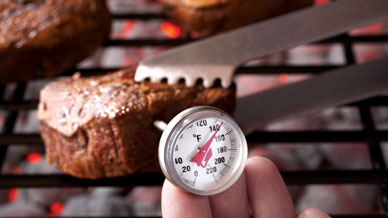I will be blogging this month about how you can incorporate beef into your healthy diet. These posts are sponsored by the Northeast Beef Promotion Initiative and the Pennsylvania Beef Council, but are expressions of my own.

When designing a kitchen, you may be looking for the shiniest range or refrigerator, but don’t put proper food safety on the back burner.
As National Nutrition Month® comes to a close, I want you to continue to put your Best Fork Forward with proper food handling knowledge. Past posts this month have featured fabulous recipes showing you how to incorporate various cuts of beef into your healthy diet. This one will provide you with tips for proper storage and cooking methods for beef, keeping your whole kitchen healthy.
Proper storage of beef
How long can you keep fresh beef in the refrigerator?
It depends on the cut, but a general rule of thumb is three days for steaks and roasts, and 1-2 days for ground beef. If you aren’t going to use the beef you purchased in that time frame, you can freeze it up to twelve months.
How should I defrost frozen beef?
Always defrost meat in the refrigerator, not on the counter (you can also thaw in the microwave). Foodborne illness is prevented when foods remain at safe temperatures (that bacteria can’t grow in). Be sure the meat is on a plate or in a container that can hold any raw juices as it defrosts.
A note about cutting boards
One of the handiest items you’ll use when cooking, is the cutting board. Try to stock a few different cutting boards, using one for meats, another for vegetables or fruits, and another for breads. Always be sure to clean the boards with hot soapy water after each use. Never cut something on a board that you had raw meat on until it’s washed (be sure not to reuse the plate you had raw meat on either). 
Cooking Beef
There are so many quick and easy ways to cook beef, making it a great choice for busy weeknights and special occasions alike. Here are some terms to be familiar with:
- Grilling is probably one of the most popular ways to prepare beef steaks and burgers. You can light up the grill and cook the whole meal here. Use foil pouches to steam vegetables, or just toss veggies with olive oil, and cook them right on the grill. Set the veggies aside and keep warm, while you finish grilling the beef. You may also enjoy marinating less tender cuts for the grill. The marinade adds flavor and tenderizes.

- Roasting. Using your oven is great for large beef roasts (such as a rib roast). Simply season the roast, and place into a roasting pan with rack.
- Braising. Who doesn’t love pot roast? This cooking method requires browning the beef first, and then simmering (I often just brown it in the same pot I’ll roast it in). After browning, season the beef, transfer to large stock pot, add liquid (water, red wine, low sodium stock), and simmer.
- Stewing. All the nutrients get sealed into the liquid with comforting stews. Try our Easy Beef Burgundy from Hypertension Cookbook For Dummies®
- Stir-Frying. This is a great way to stretch your food budget. Try slicing beef sirloin into thin strips, and adding sliced peppers, broccoli, or other favorite vegetables. Serve over rice, creating a delicious meal.
How do you determine doneness?
 You are probably familiar with the terms rare, medium rare, and medium or well done. They each relate to a certain temperature. Using a meat thermometer, place it into the thickest part of the steak or roast to test (145 degrees is medium-rare, 160 is medium, and 170 is well done).
You are probably familiar with the terms rare, medium rare, and medium or well done. They each relate to a certain temperature. Using a meat thermometer, place it into the thickest part of the steak or roast to test (145 degrees is medium-rare, 160 is medium, and 170 is well done).
Ground beef (burgers, meatloaf) should always be cooked to at least medium, or 160 degrees. Also, keep in mind that temperatures will continue to rise about 5-15 degrees for larger roasts once you remove them from the oven.
Keep your kitchen clean, organized, and food-safe to enjoy meal planning, and stay healthy!




